Affiliate links on Android Authority may earn us a commission. Learn more.
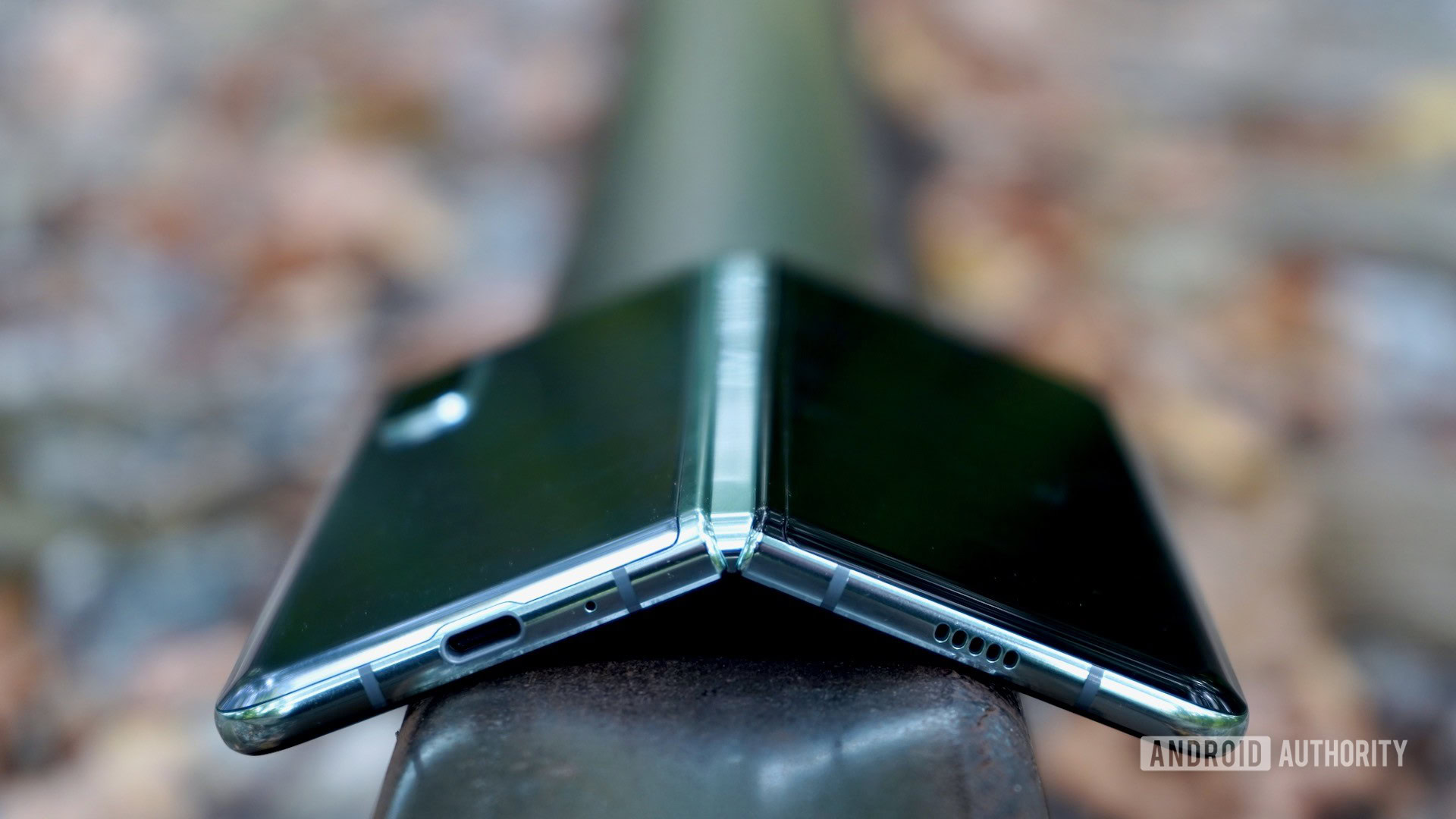
Samsung Galaxy Fold
What we like
What we don't like
Our scores
Samsung Galaxy Fold
You’ve made it, you’ve reached the final chapter in Android Authority‘s Samsung Galaxy Fold review! In this conclusion we put all the pieces together to provide you with the complete picture.
On day one we offered our overall impressions of the hardware. On day two we gathered our thoughts on the software experience. And on day three we looked at core functions, such as the battery, processor, and camera. Now that we’ve reached day four, we’re prepared to deliver our final thoughts and recommendations. I’ve updated the Samsung Galaxy Fold review throughout with additional insights and details, so be sure to give the entire text a read.
Does the phone stride boldly into the future, or stumble along the path? Find out in the conclusion of Android Authority’s Samsung Galaxy Fold review.
Update July 17: Waiting on news of the Samsung Galaxy Fold 2, which may not arrive for several months. The price of the original Galaxy Fold has come down only $200, but it is still available from Amazon.
Update – May 8: We have more details about the LG V60 ThinQ 5G now that we’ve had a chance to review the phone.
Update – March 20: We have added some new details now that the LG V60 ThinQ 5G is available with its second display.
Update – February 17: We have added some new analysis in the conclusion now that the Motorola Moto Razr and Samsung Galaxy Z Flip are available.
Update – January 17: We have added some new analysis in the conclusion now that the LG G8x ThinQ and HUAWEI Mate X have reached the market. Pricing and our recommendations otherwise remain unchanged.
Samsung Galaxy Fold review: The big picture
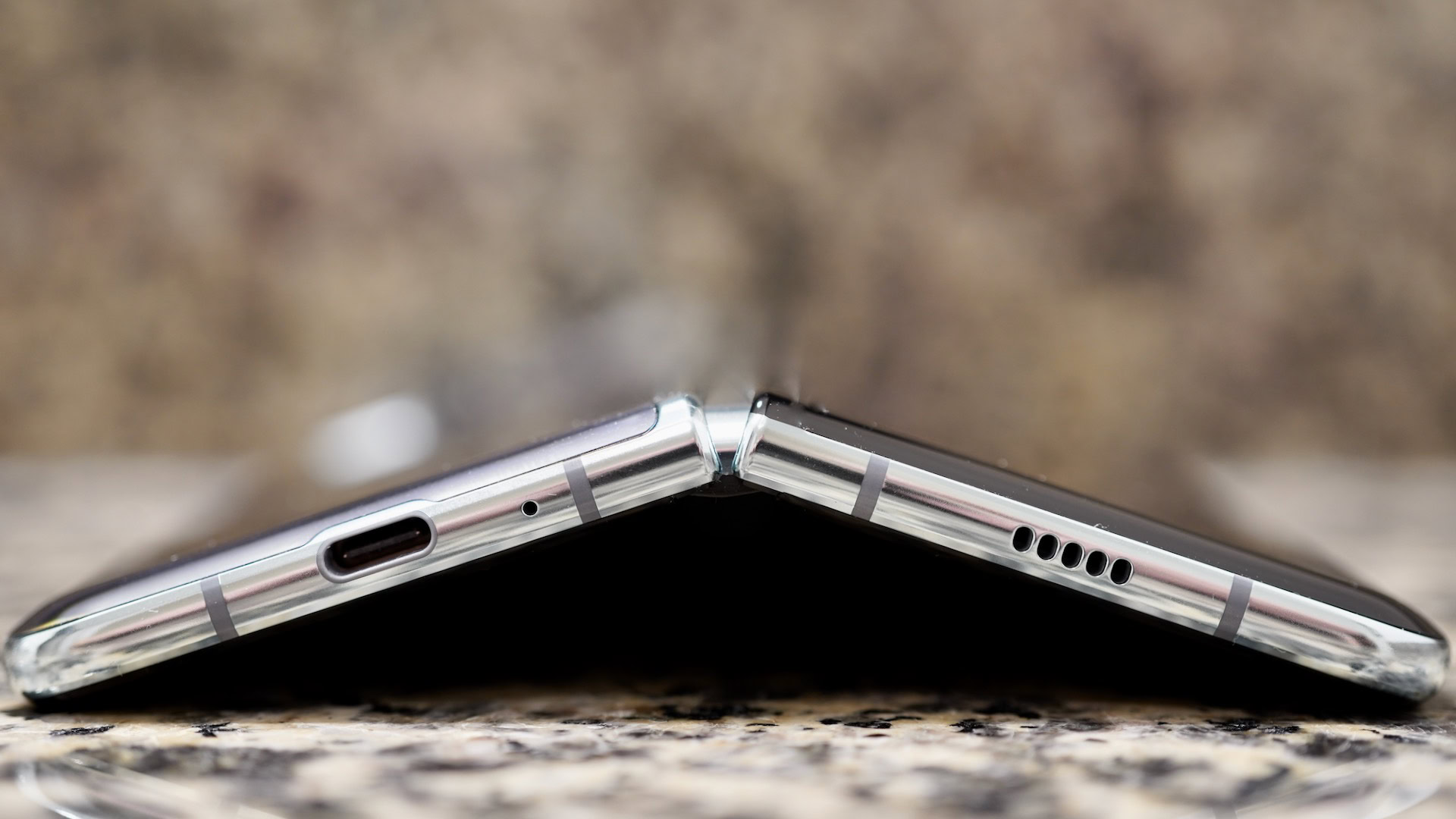
It takes a strong vision, a lot of hard work, and plenty of resources to launch a new form factor. Smartphones have been a thing for most people for well more than 10 years now, and tablets have almost reached their first decade. Each has its advantages. Phones are smaller and more portable, while the added real estate of a tablet allows for a richer visual experience.
Foldables hope to bridge this divide and offer the best of both worlds.
Samsung and HUAWEI have been racing since last year to get a true folding device to market. When I say “true folding device,” I mean a phone with a screen that bends, folding upon itself one way or the other in a way that’s meaningful enough to change the overall shape.
Where Huawei’s Mate X screen is entirely on the outside, the Samsung Galaxy Fold’s main display is hidden within. You open it like a book to use the larger screen.
Each has pros and cons, and we look forward to diving into both to see just how they impact the day-to-day experience.
What’s in the box
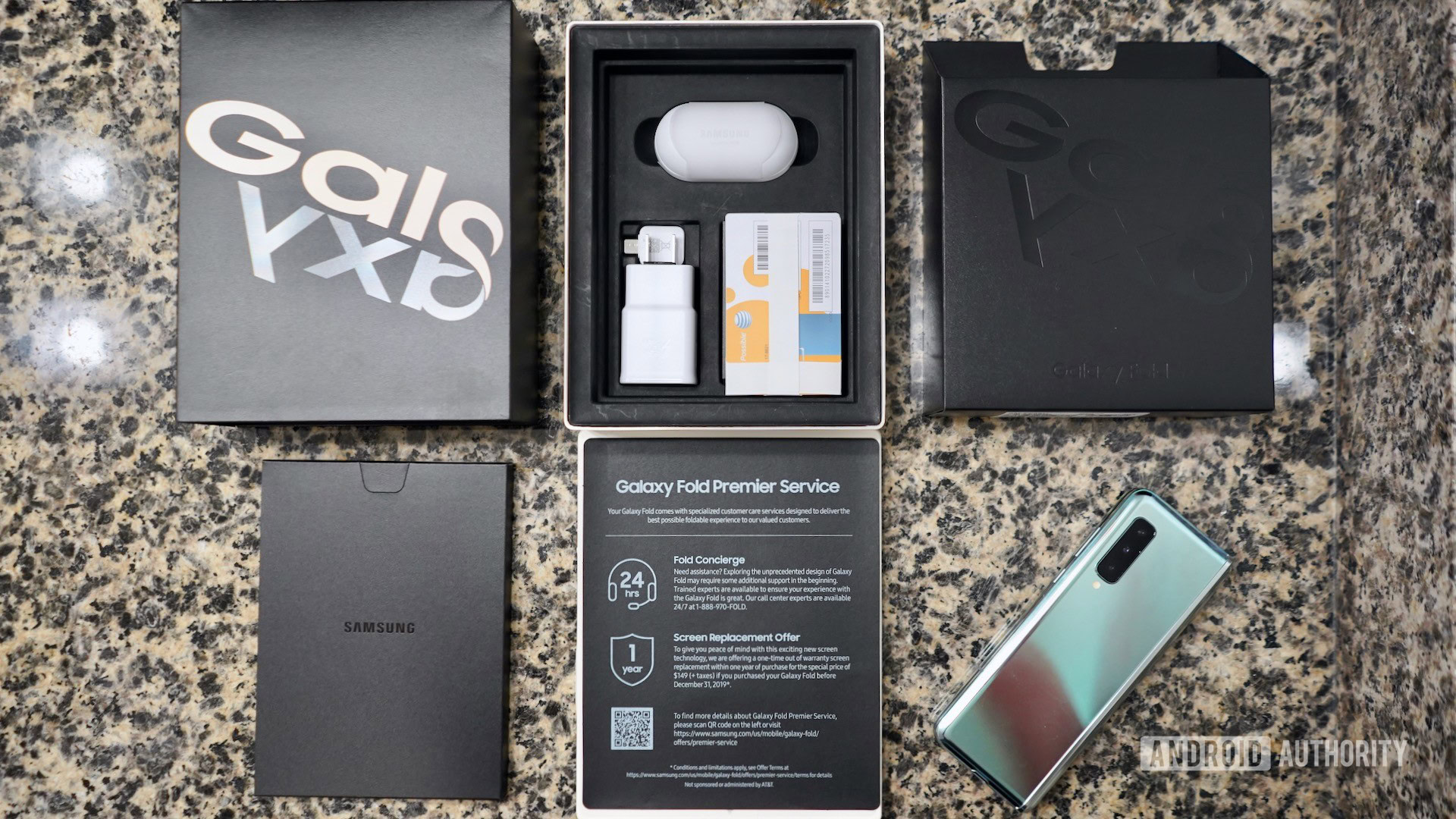
Opening the Galaxy Fold retail box is sort of like unfolding a puzzle. A black outer sheath slides upward, revealing a white box that’s tucked into a second sheath that slides down. Once the sheathes are removed you have the main container, which itself is split into two halves.
Lift the lid and you’ll see the Galaxy Fold tucked into the cardboard. Samsung installed a sticker on the screen that warns against stressing the display and committing other acts of abuse.
Below the phone are two more info sheets. The top one explains the basics of the Galaxy Fold Premium Service, while the second reiterates the care needed to keep the phone safe. Galaxy Buds Bluetooth headphones, a high-capacity charger, and a USB-A to USB-C cable are provided, as is a basic case to protect the phone from scratches and minor drops.
You’ll also encounter a SIM tool and lots of paperwork.
Design
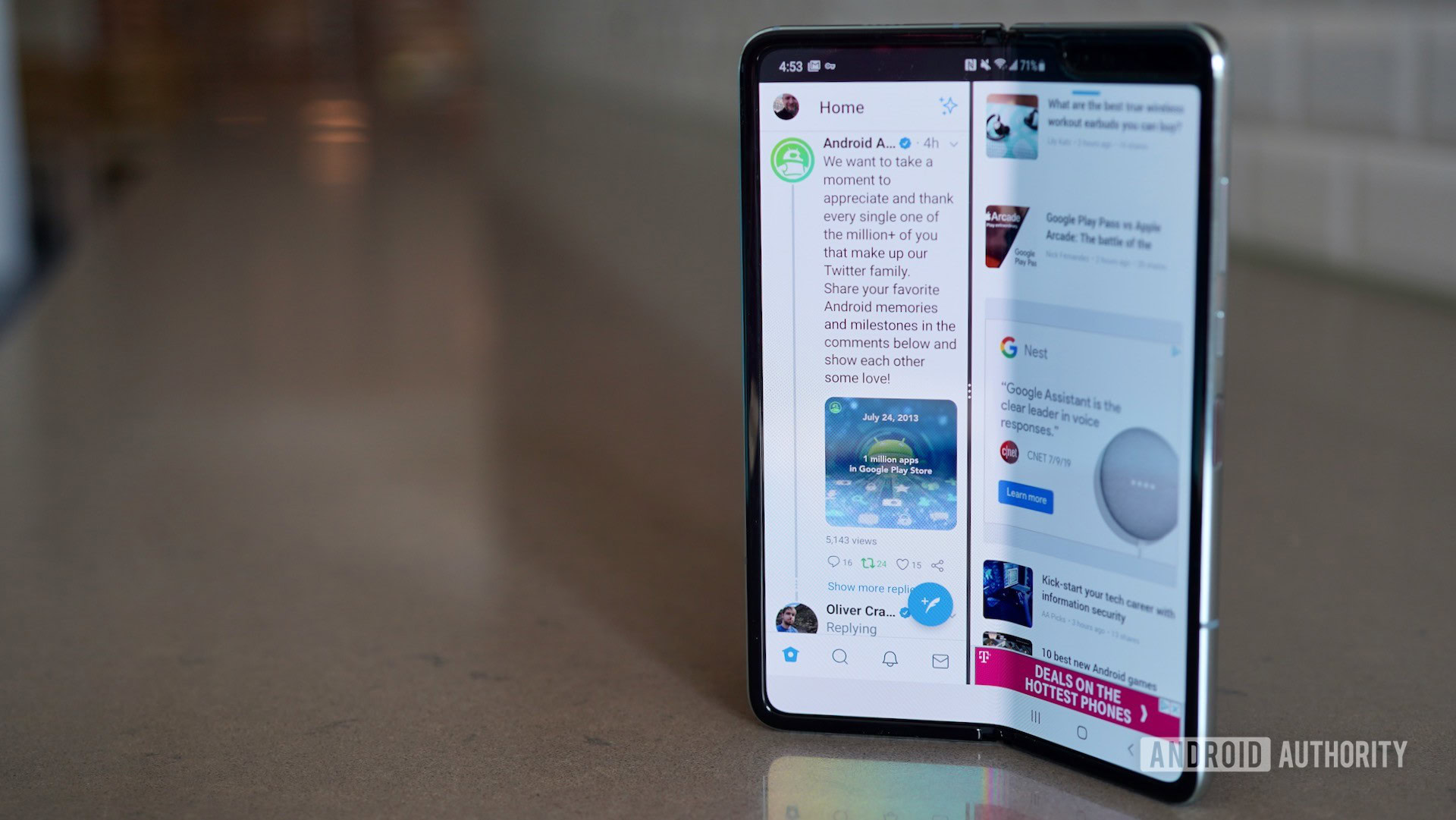
- 160.9 x 62.8 x 15.7mm (closed)
- 160.9 x 117.9 x 6.9mm (open)
- 276g
- Aluminum chassis
The Galaxy Fold is a significant piece of hardware that grabs the attention of nearly everyone who sees it. I used it for several days around Manhattan, New Jersey, and San Diego. I noticed a lot of eyes locked onto the Fold. My seatmate on a flight asked about it with obvious interest.
There’s a reason Samsung ships the phone unfolded. You’re encouraged to turn it on and see the screen before anything else — an experience that’s sure to get your pulse racing. The square(ish)-shaped display fires up brilliantly and holds your gaze. It’s only after your eyes have feasted on the bendy AMOLED that you begin to notice other aspects of the hardware.
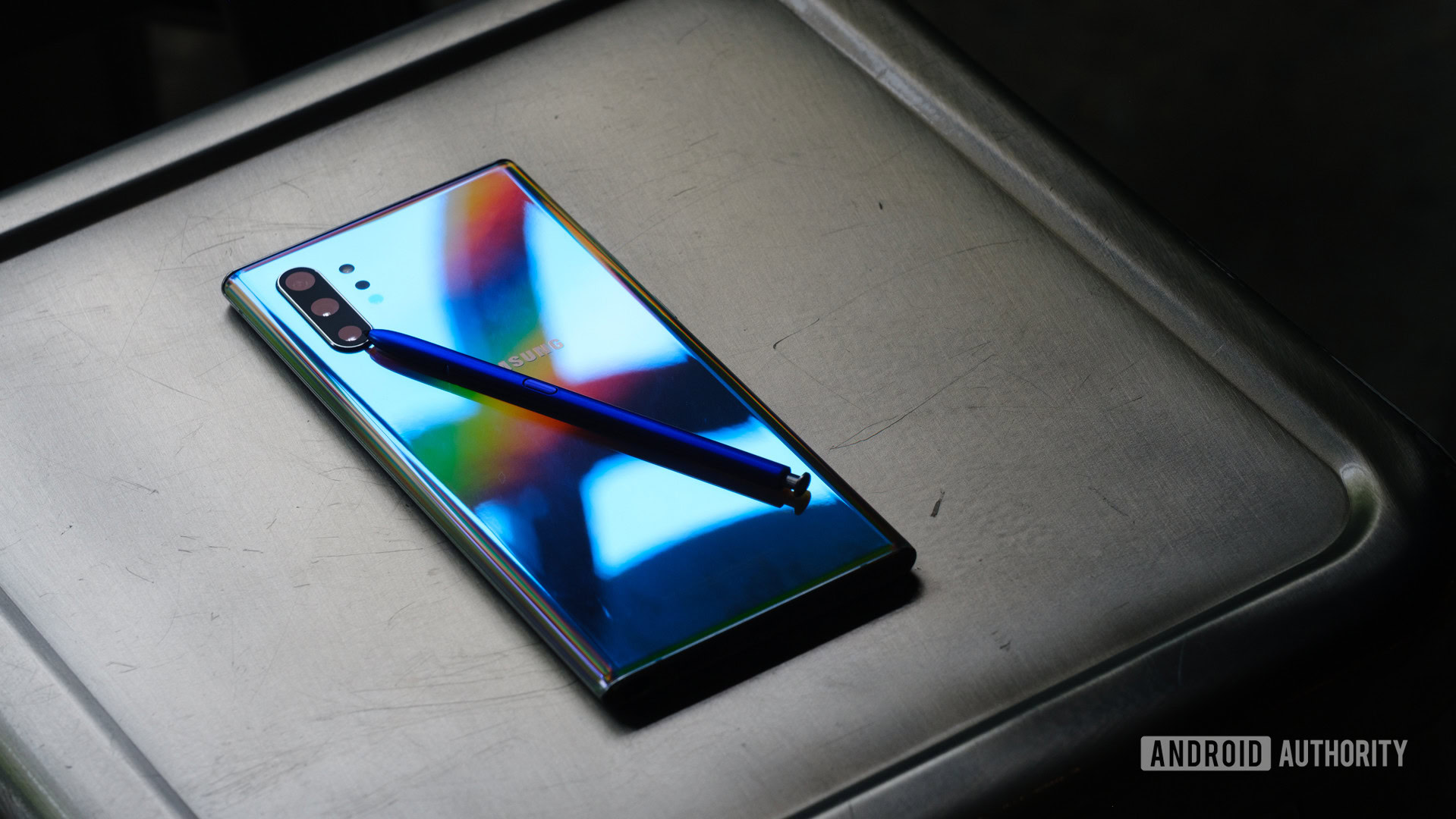
The glass back of the silver variant we have is similar to the Aura Galaxy Note 10 in terms of the gradient and reflectivity. It’s quite something. Thanks in part to the outer display, the front is basically black. A metal, book-like spine protects the hinge on one side when the Fold is folded.
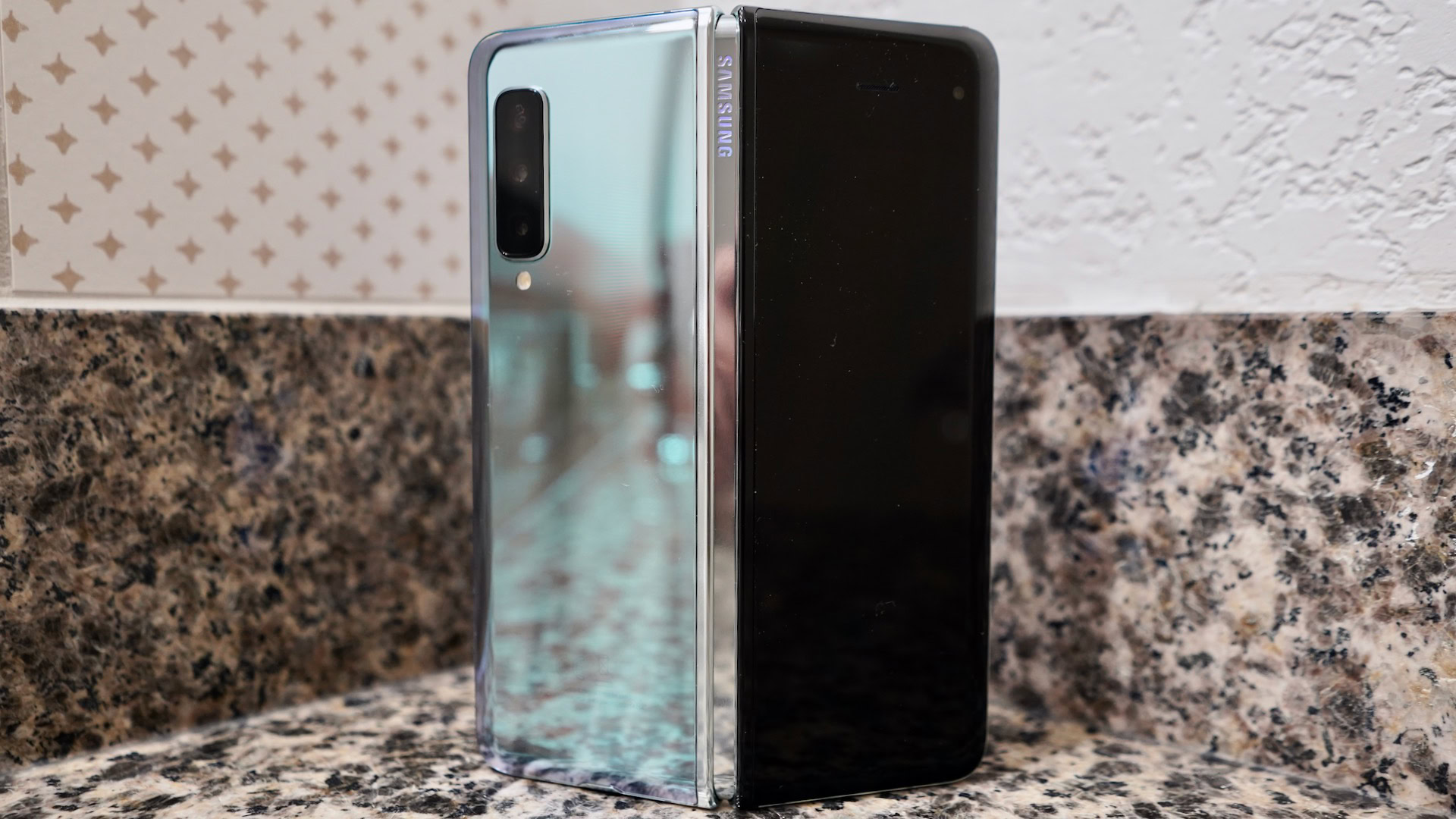
Anyone who’s ever used a recent Galaxy S or Galaxy Note phone will feel at home with the design of the edges. The silver-colored metal is curved and comfortable. The power/Bixby button, volume toggle, and thumbprint reader are positioned on the right edge — both when the phone is open and closed.
The thumbprint reader’s location is problematic. While I typically like side-mounted fingerprint sensor, this reader is harder to find and use consistently when the phone is closed due to the other half. It’s fast when you can find it.
You’ll see the SIM card tray located on the left edge and the USB-C port tucked into the bottom edge, but no headphone jack even though this is a huge piece of hardware. (Courage.)
The hinge is clearly over-engineered to withstand thousands upon thousands of open-and-close actions.
I’d call the phone heavy. How can it not be? It measures 160.9 x 62.8 x 15.7mm closed, or 160.9 x 117.9 x 6.9mm open, and weighs in at 276g. That’s 100g more than most other phones. It’s made of a combination of materials, including metal, glass, and plastic. Samsung packed a lot in there, and nothing about the phone comes across as cheap.
Speaking of which, Samsung went through a number of steps to reinforce the device after the first units failed in spectacular fashion. Compared to what I remember about the first generation of the Fold, this version feels more significant, stronger, and legitimate. I wouldn’t give the strength of the hinge a second thought. It’s clearly over-engineered to withstand thousands upon thousands of open-and-close actions.
None of this means the Fold is rugged, not at all. It’s not IP rated, and Samsung basically warns against ever dropping it. In fact, at least one review unit has already failed, which is a troubling development. Believe it or not, Samsung is offering a one-time screen replacement for $149 during the first year of ownership in order to put owners at ease. After that, uh, it’s going to cost a lot more.
The included case, which looks like it’s made from carbon fiber, will keep the phone safe from scratches, but nothing more.
Overall, the design is something to behold. Sure it’s bulky and awkward to use, and I’m not sure it feels like I’ve entered “the future” when opening and closing this phone, but it’s hella fun. Just be prepared to talk to everyone who sees it.
Displays
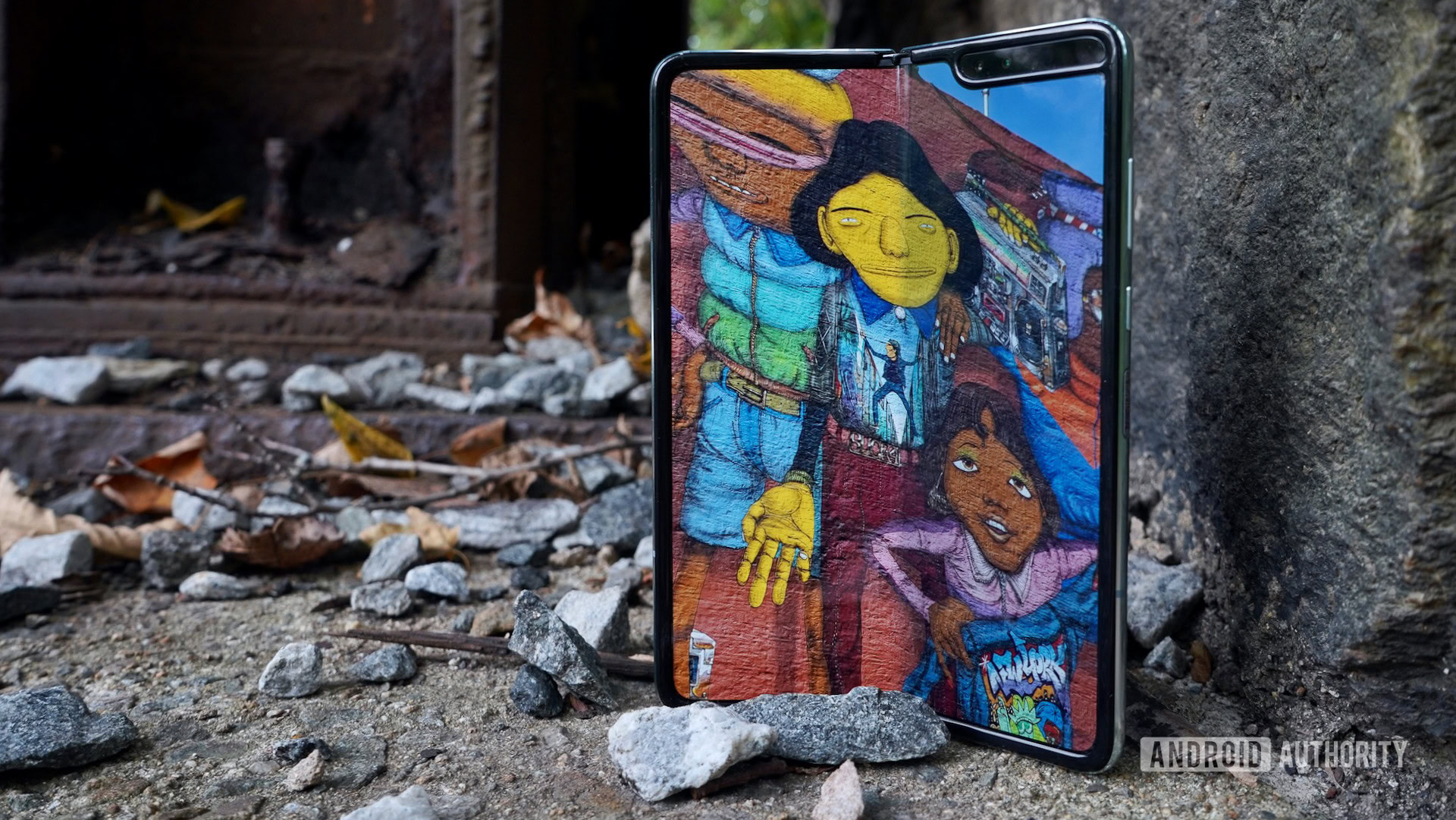
- Main display
- 7.3 inches
- 2,153 x 1,536 resolution
- 4.2:3 aspect ratio
- 362ppi
I like. Big. Screens and I will not lie. Those other fellas can’t deny. The huge glass caught your eye. And made you iPhone owners wanna cry.
Yeah, it’s impressive. It stretches 7.3 inches across the diagonal, with 2,153 vertical pixels and 1,536 horizontal pixels. The pixel density is 362ppi, which isn’t anywhere close to the highest in the market, but it’s still good. The display has a unique aspect ratio of 4.2:3. The Dynamic AMOLED is incredibly bright, clear, and punchy. As is always the case, Samsung pushes the colors a bit. Even so, the dynamic range is excellent, blacks are grim-reaper dark, and photos, videos, and more look fantastic on it.
A seam is visible in the center of the screen when the display itself is off. Your thumb will feel it as it glides over the surface. However, the seam almost vanishes visually most of the time. Only on a few screens — generally a single solid color — revealed it. Over the course of the week I didn’t notice the seam get any larger, rougher, or more obvious as I opened and closed the Fold.
Then there’s the notch in the upper right corner. I don’t mind it. It contains the user-facing cameras and sensors. Samsung used the screen space to the left of the notch to house the status bar for notifications, signal, battery, etc. I stopped noticing the notch fairly quickly.
I like. Big. Screens and I will not lie. Those other fellas can’t deny. The huge glass caught your eye. And made you iPhone owners wanna cry.
A raised ridge circles the entire display. I get why the ridge is there, but it could look a little bit better. There is a small cap piece (top and bottom) that protects the exposed portion of the screen at the seam where it bends. This is where the top layer of the display appeared to be a screen protector to some initial users. The screen comes across as more tucked in and safeguarded than it did before. I didn’t see anything that looked like it could be pulled apart. This is good news.
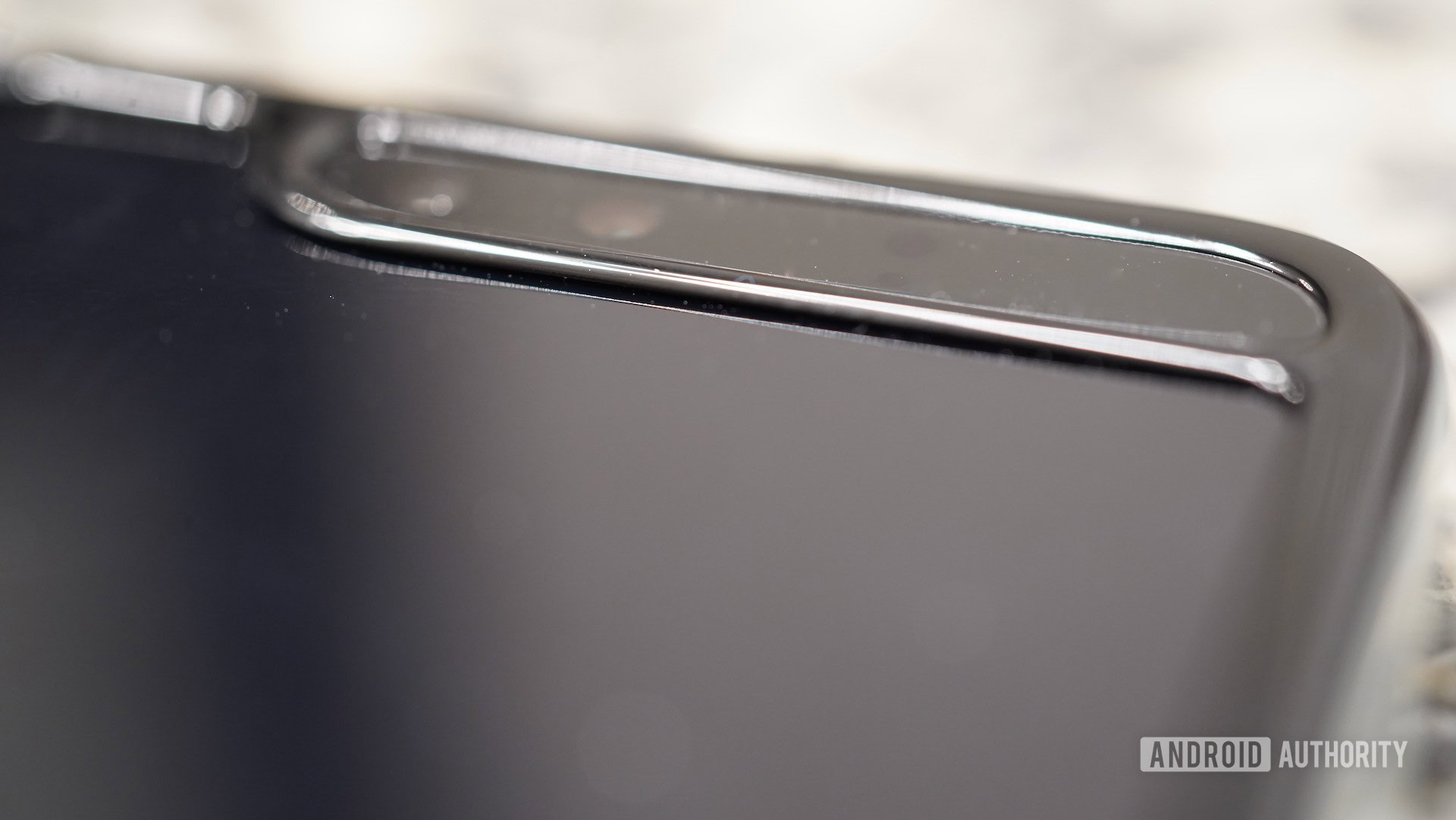
Content looks great on the screen. It’s awesome to have a larger panel for watching YouTube videos, scrolling through Twitter, and gaming. Just be careful, your Instagram feed fills the screen entirely, necessitating that you be more discreet.
The sheer size and brilliance of the screen simply draws your eyes in. It’s the screen that caused so many passersby to give it a second look. Most people haven’t seen this form factor and it will take time for it to become something people experience on a daily basis.
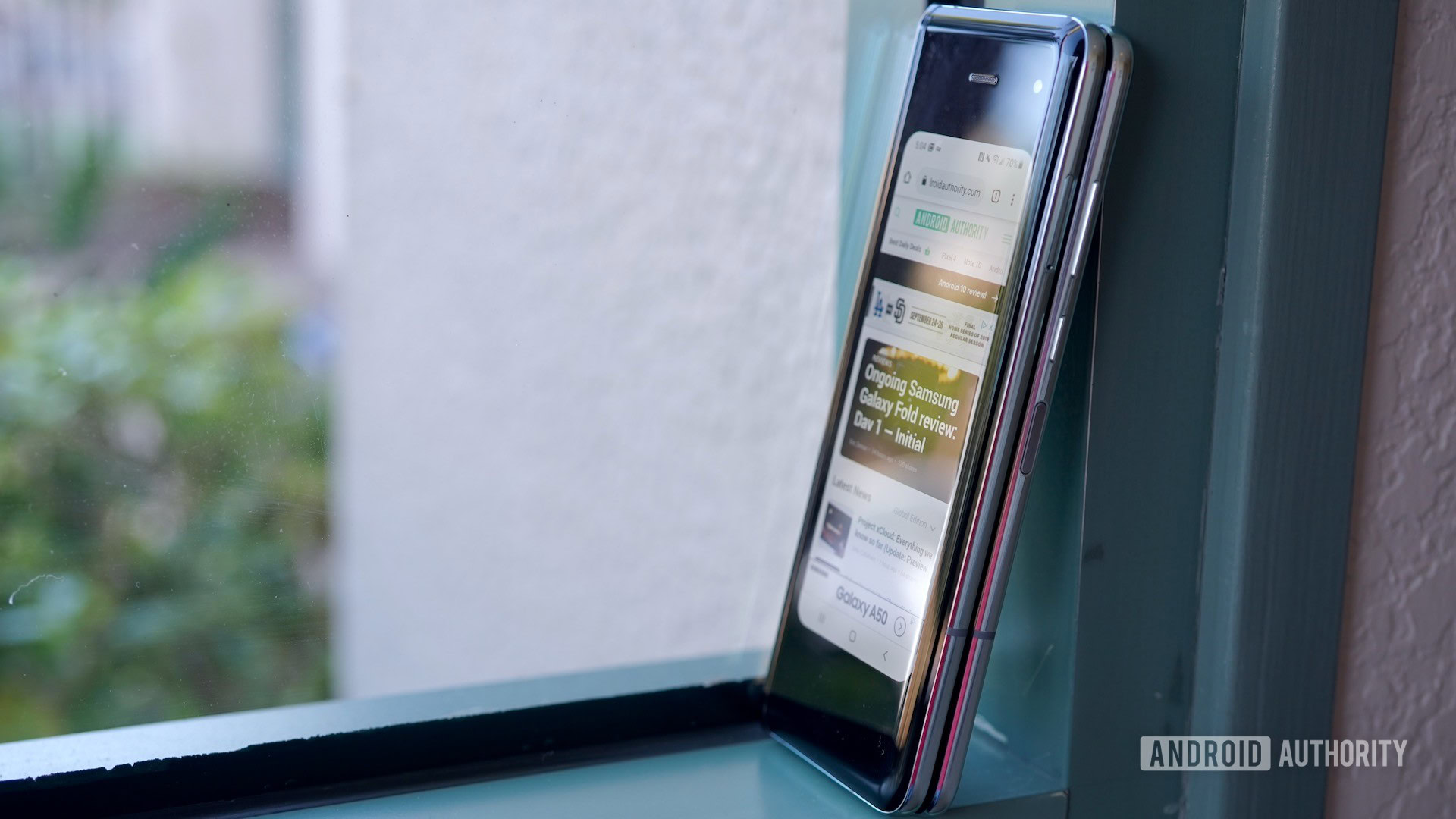
- Cover display
- 4.6 inches
- 1,680 x 720 resolution
- 21:9 aspect ratio
- 399ppi
I’m not the biggest fan of the exterior display. At 4.6 inches with a 21:9 aspect ratio, it’s tall and skinny and looks awkward. The resolution is respectable at 1,680 by 720 for a density of 399ppi. It’s usable, though I’m certain Samsung designed it in such a way to encourage people to just open the darned thing and use the main screen.
This outer display is bright and crisp enough. I was able to use it indoors and out with no trouble at all. For example, using the outer display to take pictures on a sunny day in New York City worked very well. Colors are good, if boosted a little, and, for lack of a better word, the Cover Display is “fine.”
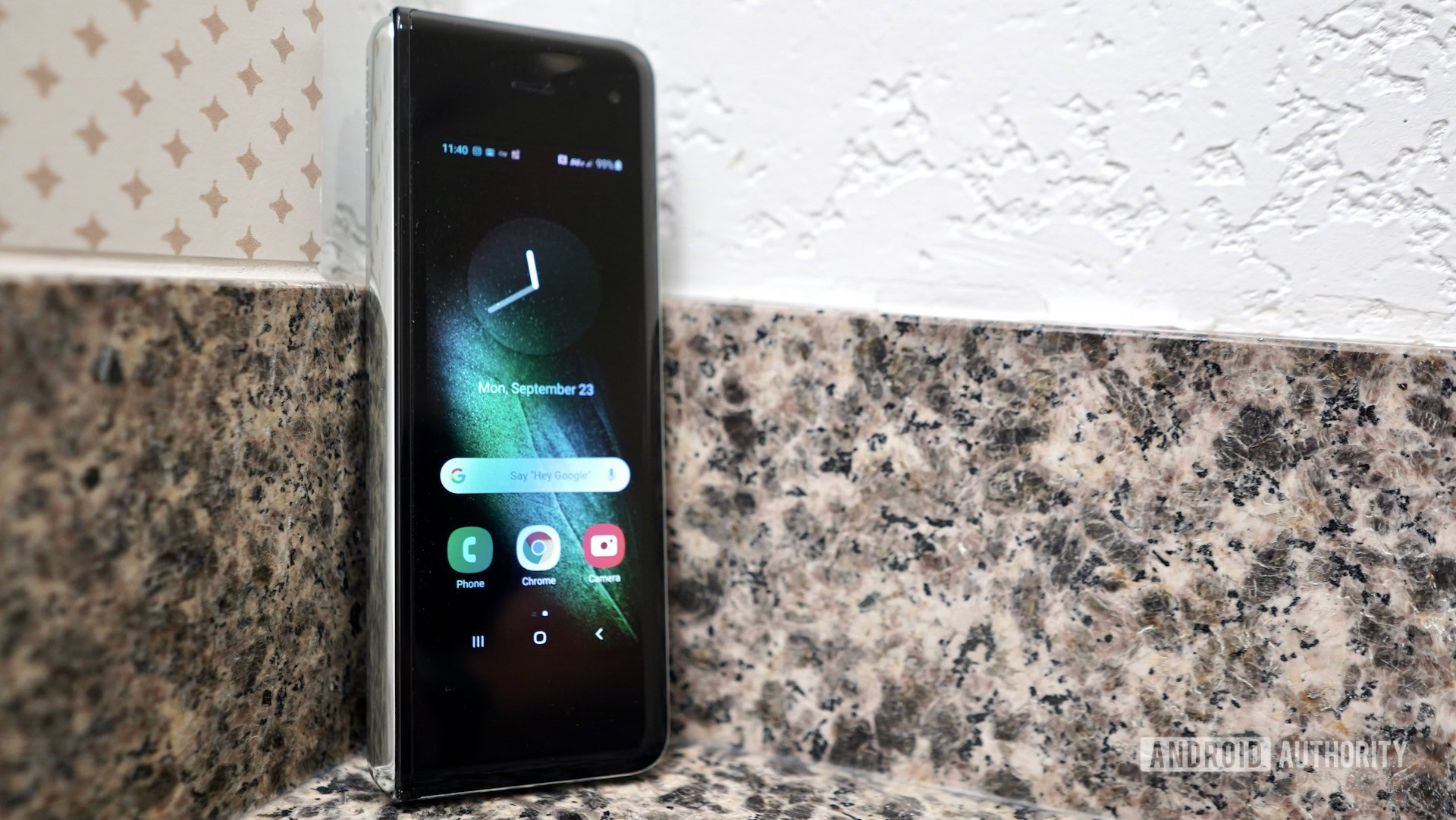
The end result of app continuity is nearly magic.
Everything you can do on the outer screen you can do on the inner screen thanks to app continuity. Samsung and Google worked together to create the APIs developers need so their apps transition seamlessly not only from one screen to the other, but from one shape or window to another as people multitask with the Galaxy Fold. Google baked these APIs into the core of Android 10, which means developers now have easy access to these tools in order to customize their apps. The end result is nearly magic.
Performance
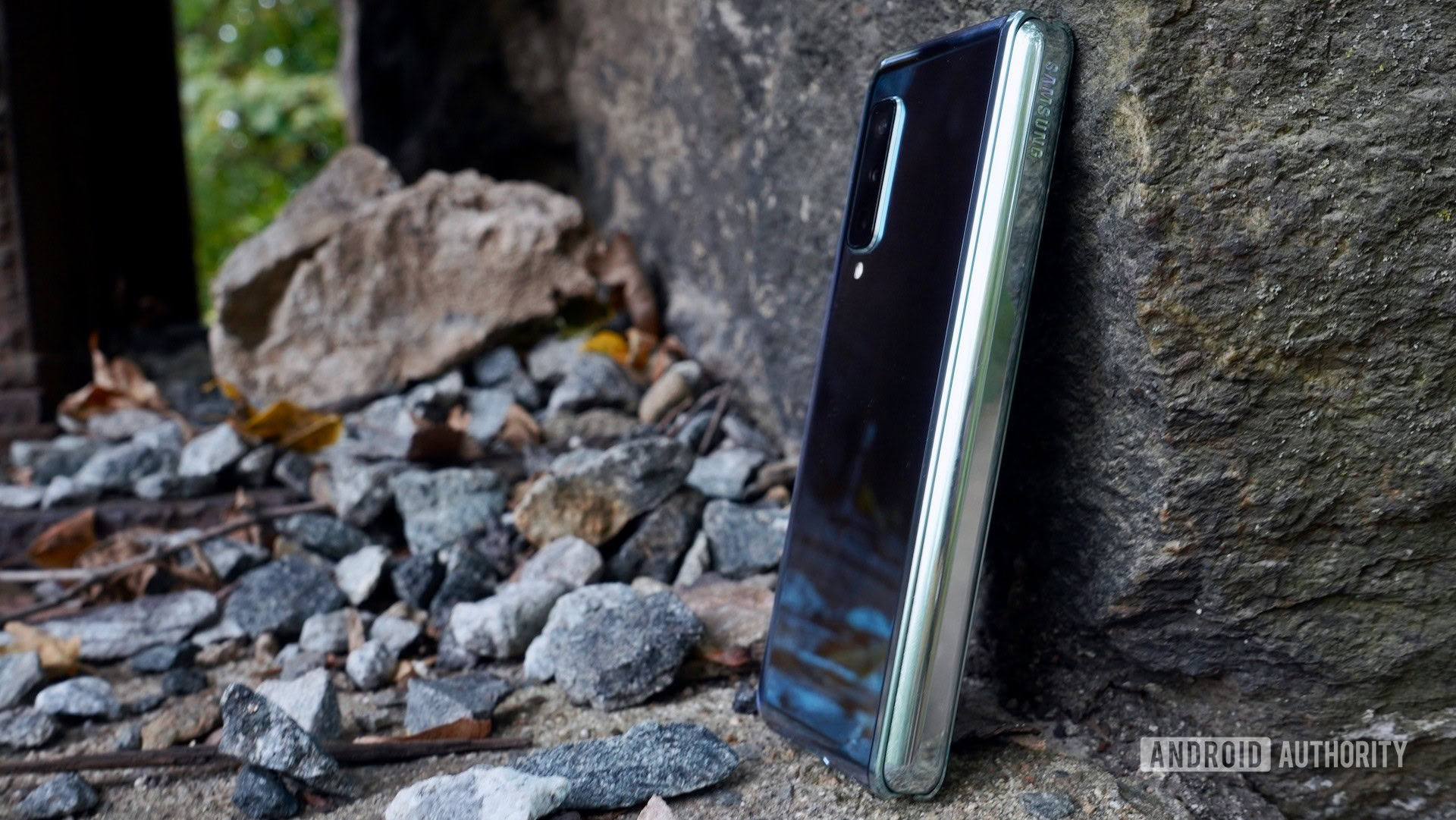
- Qualcomm Snapdragon 855
- 12GB of RAM
- Adreno 640 GPU
- 512GB UFS 3.0 storage
Samsung opted for the best silicon from Qualcomm, meaning the Snapdragon 855 paired with a whopping 12GB of RAM. This class-leading SoC has eight cores clocked at 2.84GHz (one), 2.41GHz (three), and 1.78GHz (four) to handle high- to low-intensity tasks. An Adreno 640 GPU pushes the polygons, and 512GB of UFS 3.0 storage portends quick interactions with apps and content stored on the phone.
Before we discuss the numbers, let’s talk about how the phone holds up as far as the experience is concerned. The Galaxy Fold’s form factor would appear to play a role in its performance. With two screens and the software needed to transition from one screen to the other, the Fold can feel a little inconsistent at times. We’re not talking big problems, but the phone lagged here and there, froze for a few seconds, or paused just long enough for you to notice. In other words, it could be a hair better.
The phone lagged here and there or paused just long enough for you to notice.
For now, I’ll chalk up the blips to the dual-screen design and other factors introduced by the form factor. Whether or not these are truly where the problems rest, we cannot be sure.
The benchmark results matched those of the Galaxy Note 10 Plus almost exactly. It nabbed 362,810 on AnTuTu, 703/2,572 on GeekBench, and 5,656/4,972 on 3DMark, compared to 369,029, 3,434/10,854, and 5,692/4,909, respectively, on the Note 10 Plus. The outlier is GeekBench, where the Fold failed to equal the Note 10 Plus. Hard to say why.
Perhaps what I found most interesting is that the Fold only bested 87% of other devices in the AnTuTu CPU score. Moreover, it was slower in the UX and memory portions of the test. The new OnePlus 7T (Snapdragon 855 Plus), by way of comparison, reached the 99th percentile for nearly every aspect of AnTuTu.
Further reading: OnePlus 7T review: The pro you always wanted
Right now, the experience is more important to me than these numbers, and the experience doesn’t quite match that of Samsung’s own Note 10 series.
Battery
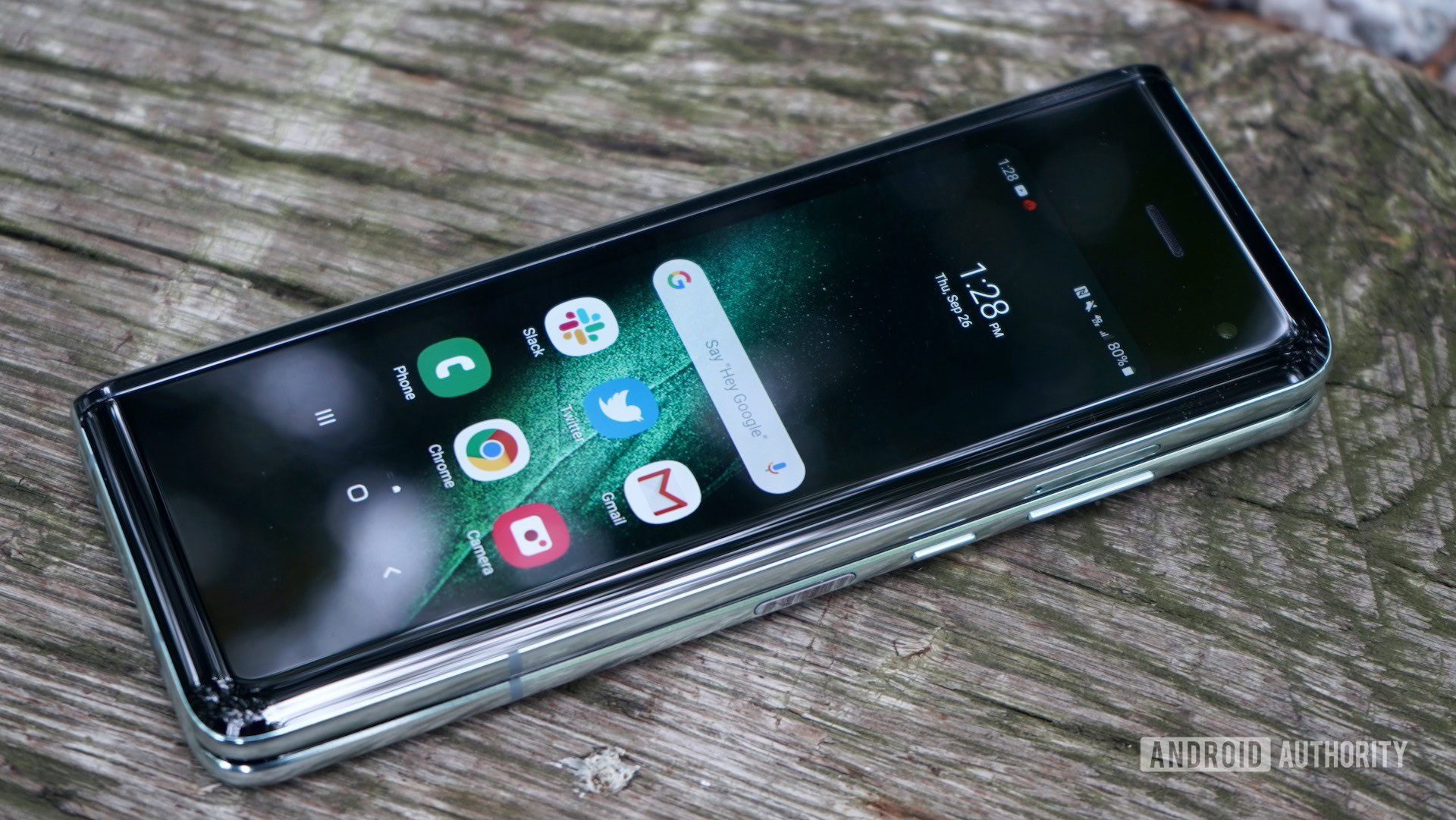
- 4,380mAh battery
- Wireless charging
- Rapid charging
- Wireless Power Share
Next up in our Samsung Galaxy Fold review: battery life. You’d think a device with two screens would suck down juice at an alarming rate. Thankfully, this is not the case with the Galaxy Fold. (BTW, I didn’t discover a way for both screens to be on simultaneously — it’s one or the other.)
The phone’s 4,380mAh battery is actually split in two, with a portion residing in each half of the phone. Like the Note 10 series, the Fold relies on Samsung’s Intelligent Adaptive Power Saving Mode to keep the phone up and running. That means the device pays attention to how you use it over time and makes proactive changes to maintain a charge.
In the week I’ve been using the phone I’ve had a hard time zeroing it out. On one day, I used the phone continuously from 9 a.m. to 5 p.m. and still had more than 70% in the tank.
The Fold not only supports rapid wireless charging, but it can share power wirelessly with certain accessories.
It charges fairly quickly. Sadly, the included charging brick is just 5V/2A, which doesn’t cut it for a $1,980 phone. I used a 60W Anker charger and the phone filled up faster.
The Fold not only supports rapid wireless charging, but it can share power wirelessly with certain accessories. I placed the Fold in Samsung’s own fast wireless charger and it powered up more rapidly than it did via the included plug. As for charging other devices, Samsung says it can handle the Galaxy Buds true-wireless headphones and the Samsung Galaxy Active 2 smartwatch. I tested the Buds and, yes, it works, albeit slowly.
See also: Samsung Galaxy Watch Active 2 review: Solid smartwatch, but not too “active”
Though I’ve was pleased with the real-world battery life of the Fold, the phone did not do so well on our objective testing. In fact, it scored a 6 out of 10 on our web and video tests. The phone ran for just under 10 hours on our Wi-Fi browsing test and about 12 hours for continuous video playback. It ran for a noticeably shorter time than the Samsung Galaxy Note 10, which has most of the same innards and a smaller battery. I believe it’s fair to blame the Fold’s larger display for its weaker battery performance.
Camera

- Standard: 12MP, f/1.5-f/2.4, OIS, 77-degree FoV
- Wide-angle: 16MP, f/2.2, 123-degree FoV
- 3x telephoto: 12MP, f/2.1, OIS, 45-degree FoV
- Outer selfie:
- 10MP, f/2.2, 80-degree FoV
- Inner selfie:
- 10MP, f/2.2, 80-degree FoV
- 8MP depth, f/1.9, 85-degree FoV
The Galaxy Fold carries over the exact camera setup seen on the Galaxy Note 10. That means a three-camera system with standard, wide-angle, and telephoto lenses. One camera on the front helps with quick selfies, and two cameras above the inner screen allow for standard and wide-angle selfies. Yes, the Galaxy Fold has six cameras.
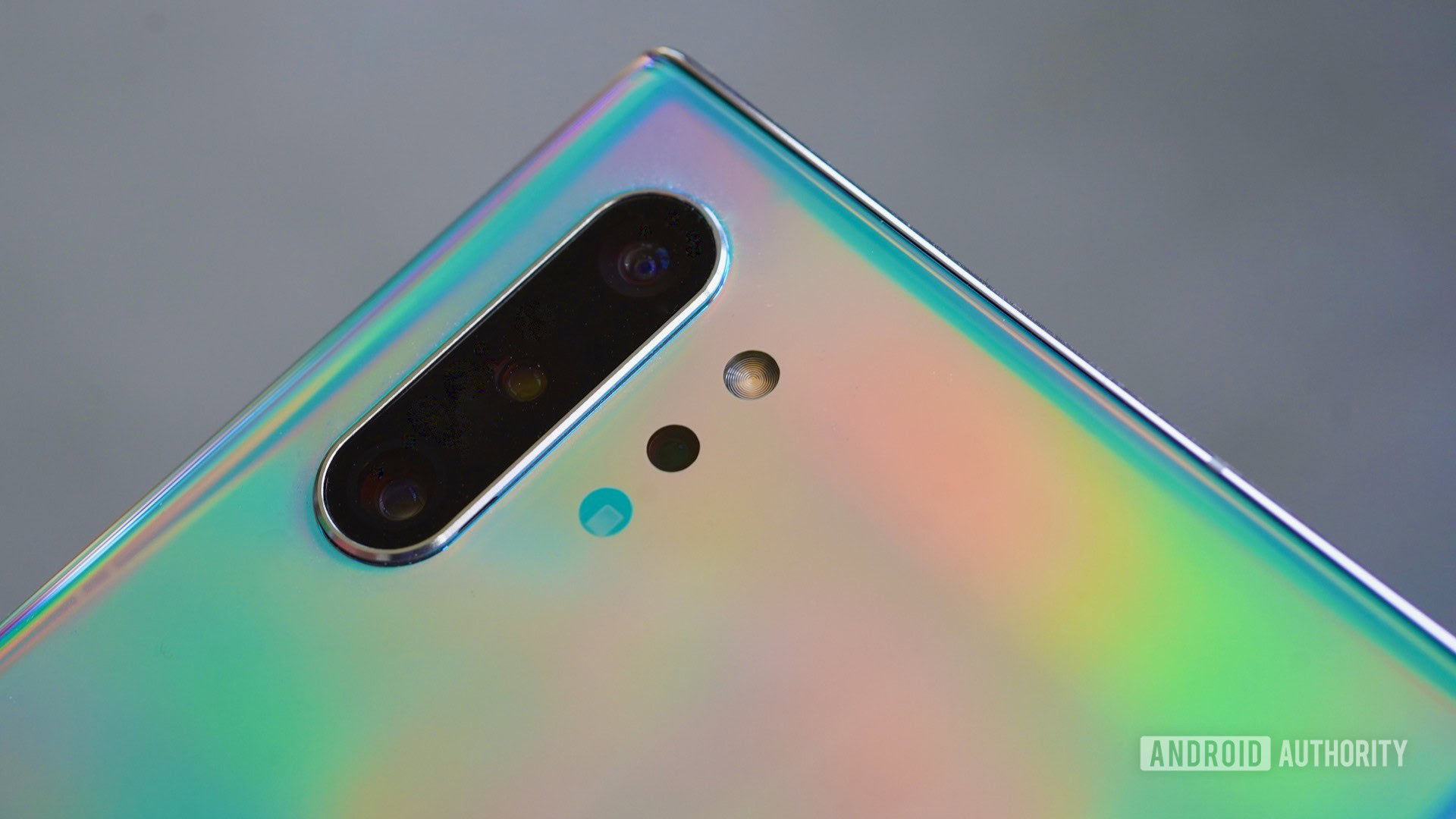
Usability is a bit of an issue as far as I am concerned. The app is, of course, the same as that of the Note 10 series. You can take selfies and photos with the main cameras when the Fold is closed. The 4.9-inch Cover Display is your viewfinder. It’s super wide, thanks to the 21:9 aspect ratio of the screen — and so are the images.
By default, all the cameras are set to the “full” aspect ratio. In this case, “full” means full screen, not the actual full resolution of the sensor. What’s doubly confusing is that this applies to the outer screen as well. Unless you actively change the aspect ratio from “full” to 4:3 in both the outer and inner viewfinders, you’re going to get oddly cropped photos. You can also set the aspect ratio to 16:9 and 1:1 if you wish.
A quick double-press of the screen lock button launches the camera. The Fold provides full access to all the camera’s features whether it is open or closed. It is a bit harder to navigate the controls on the Cover Display thanks to the smaller size. While it is easier to take pix when the Fold is closed, you have a better view of the subject when shooting with the Fold open. Conversely, shooting with the Fold open feels stupid and is confusing. For example, you need to rotate the Fold sideways — just as you do a regular phone — if you want pictures with a landscape viewpoint rather than portrait.
How are the photos? In a word: good. The daytime shots I took in New York City are fantastic across the board. The color and white balance are accurate, exposure is perfect, and focus is tack sharp. I have absolutely no complaints about the images.
Things change a bit indoors. In some of the shots you’ll see more grain, and the focus isn’t as crisp as I’d like. This was the case no matter which of the three lenses I chose. You can see this in the Penn Station tunnel and Qualcomm lab shots below.
The external selfie camera does an acceptable job. Some shots I took indoors looked decent, though color and dynamic range were a little flat. The inner selfie cameras are more fun, as they include the ability to take super wide-angle selfies. This is great when you need to fit more people in the shot, or when you want to capture more of the scene behind you. Results are on par with the outer camera.
Video options are plenty. You can record at resolutions up to 4K at 60fps, which is all you can ask for at the moment. That’s the rear camera. The front camera can capture 4K at 30fps. The device also includes slow-motion, super slow-mo, and hyperlapse for those who like to time-shift their video. The snippets I recorded looked and sounded good. I think most people will be satisfied with the video they capture with the Fold.
Full resolution samples are available here.
Software
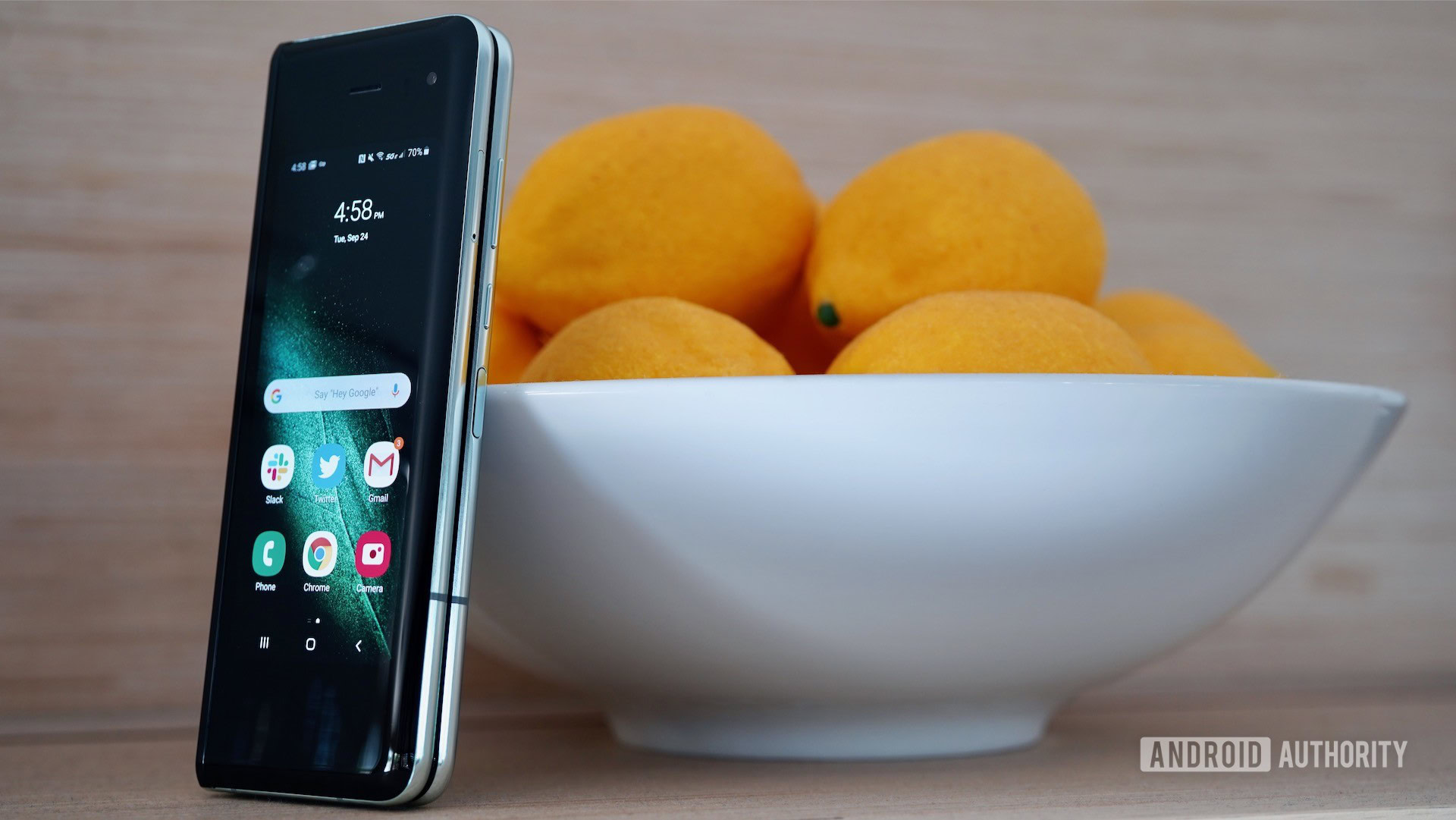
- Android 9 Pie
- One UI 1.5
The Samsung Galaxy Fold takes some getting used to. It’s a touch ungainly when closed due to the chunky thickness. You can definitely feel it in your pocket as you walk around. The weight and blockiness both contribute here. It looks a bit gangly when closed, as it’s so narrow and long.
I wasn’t able to develop a real rhythm with it in the first few days. When should I use it open? When should I use it closed? Which apps work best on the outer or inner screens? Should I multitask in several windows, or hop between full-screen apps? This kind of knowledge will come with time as people fold the Fold into their daily routines.
Let’s start with the Cover Display.
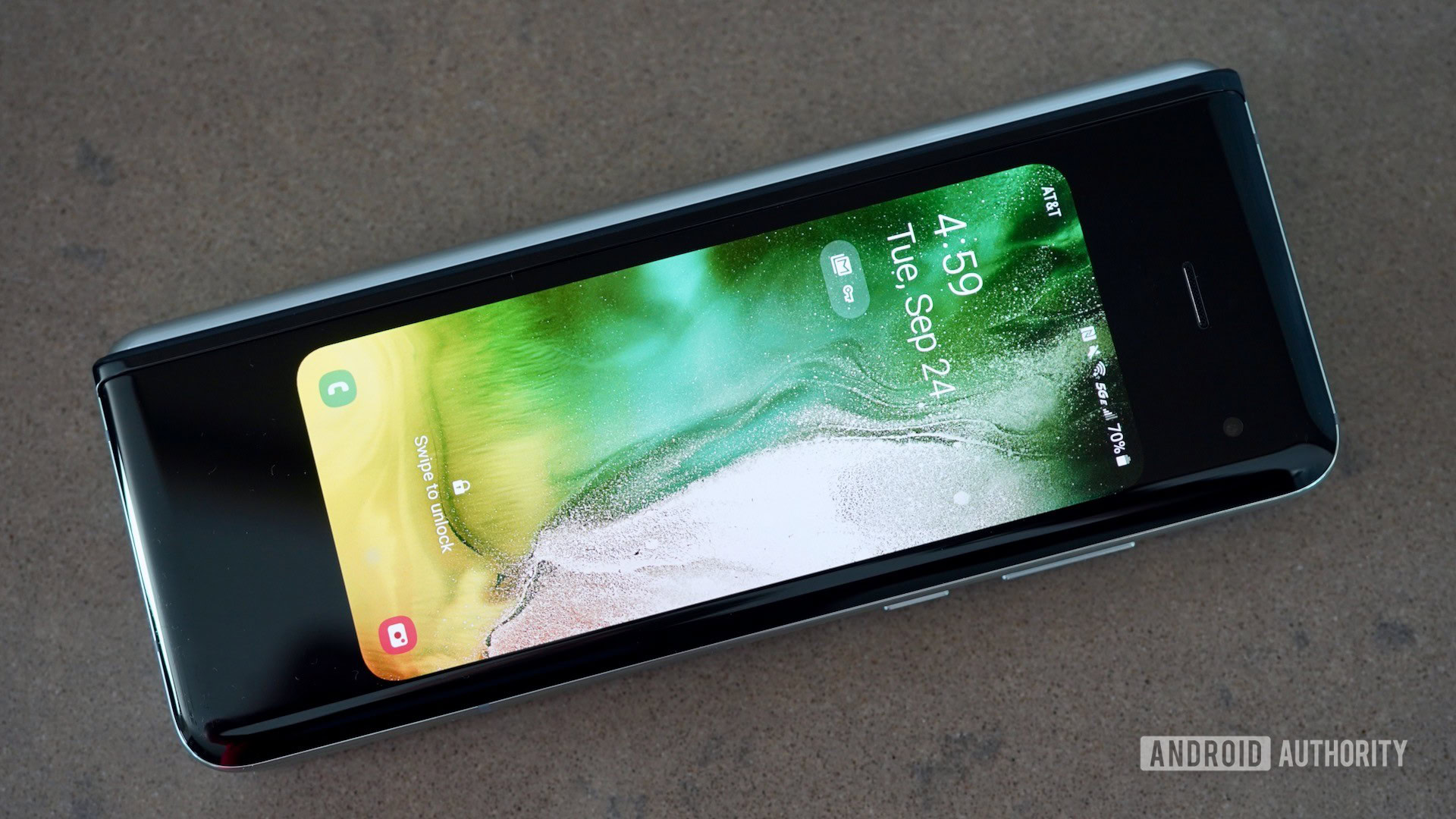
The outer screen, or Cover Display as termed by Samsung, is the screen that you see and interact with when the Fold is folded shut. It acts like any normal smartphone screen does. When the phone is sleeping the always-on display shows the time, date, and notification icons. You can select the clock style, what notification content is visible, and so on.
I like that it supports multiple home screen panels, including Bixby Home, as well as widgets and app shortcuts. The Cover Display allows you to access the app drawer, main settings, notifications, quick settings, and even app switching via the multitasking tool. You can go through an entire day and only use/interact with the Fold’s Cover Display.
Apps, however, do look squished. Samsung worked with developers to cater their apps to the 21:9 aspect ratio. The company also adjusted certain aspects of the Android 9-based One UI to make it work, such as limiting the screen to just three app shortcuts across and similar.
What’s totally odd here is that App Continuity is off by default.
The vast majority of apps I opened on the Cover Display transitioned seamlessly to the inner main screen. (This is thanks to App Continuity.) What’s totally odd here, however, is that App Continuity is off by default. You have to dive into the settings to turn it on. Why leave the phone’s most important power inactive, Samsung? Head-scratcher, to be sure.
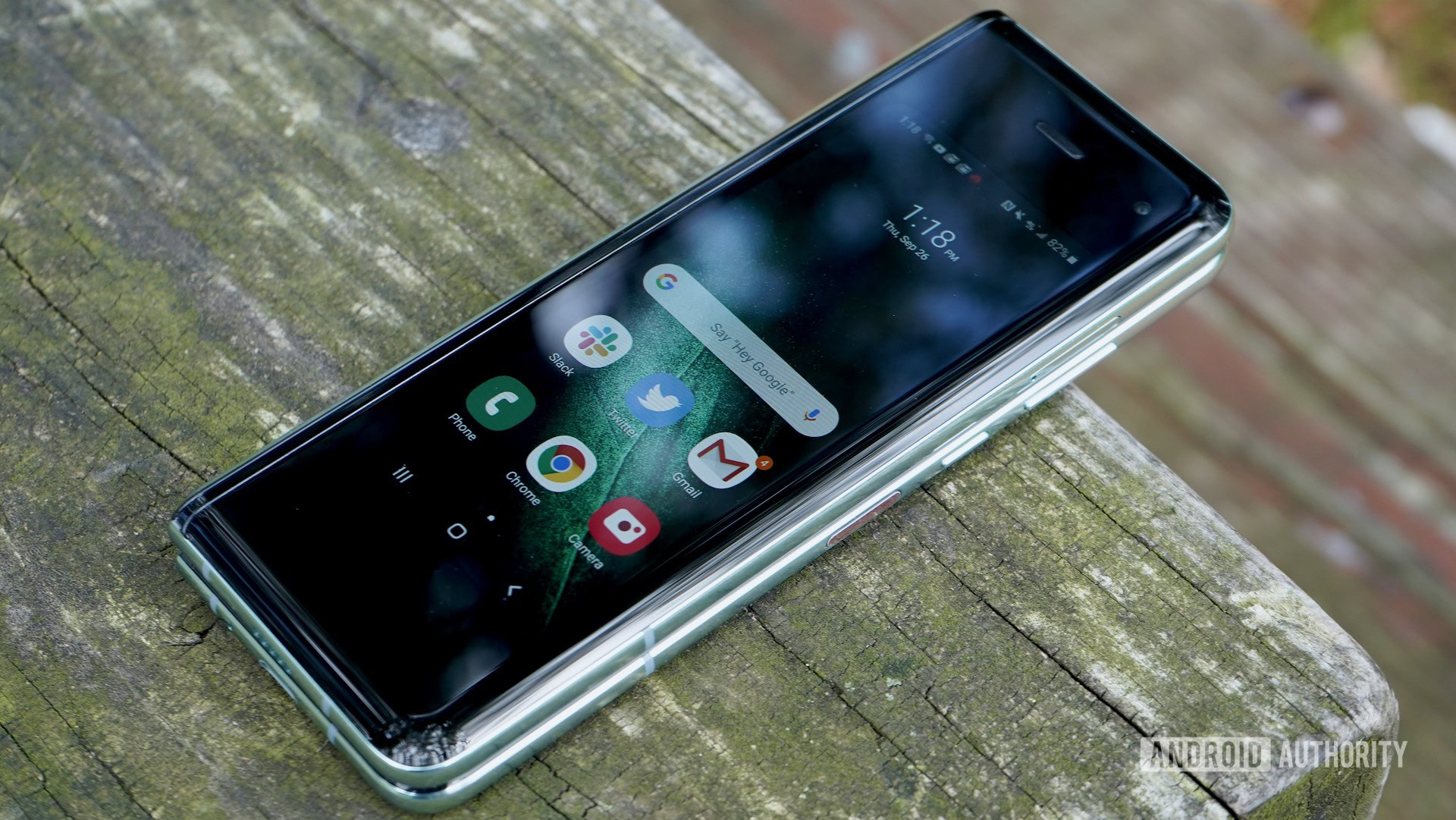
Bottom line, the outer display is a perfectly legit smartphone unto itself. It’s perfect for interacting with the Fold on the go. For example, I found it ideal when I landed in San Diego and needed to triage my inbox as I walked out of the airport. This is exactly the scenario for which the Samsung Galaxy Fold was designed.
Moving on, let’s discuss what it’s like to use the main display.
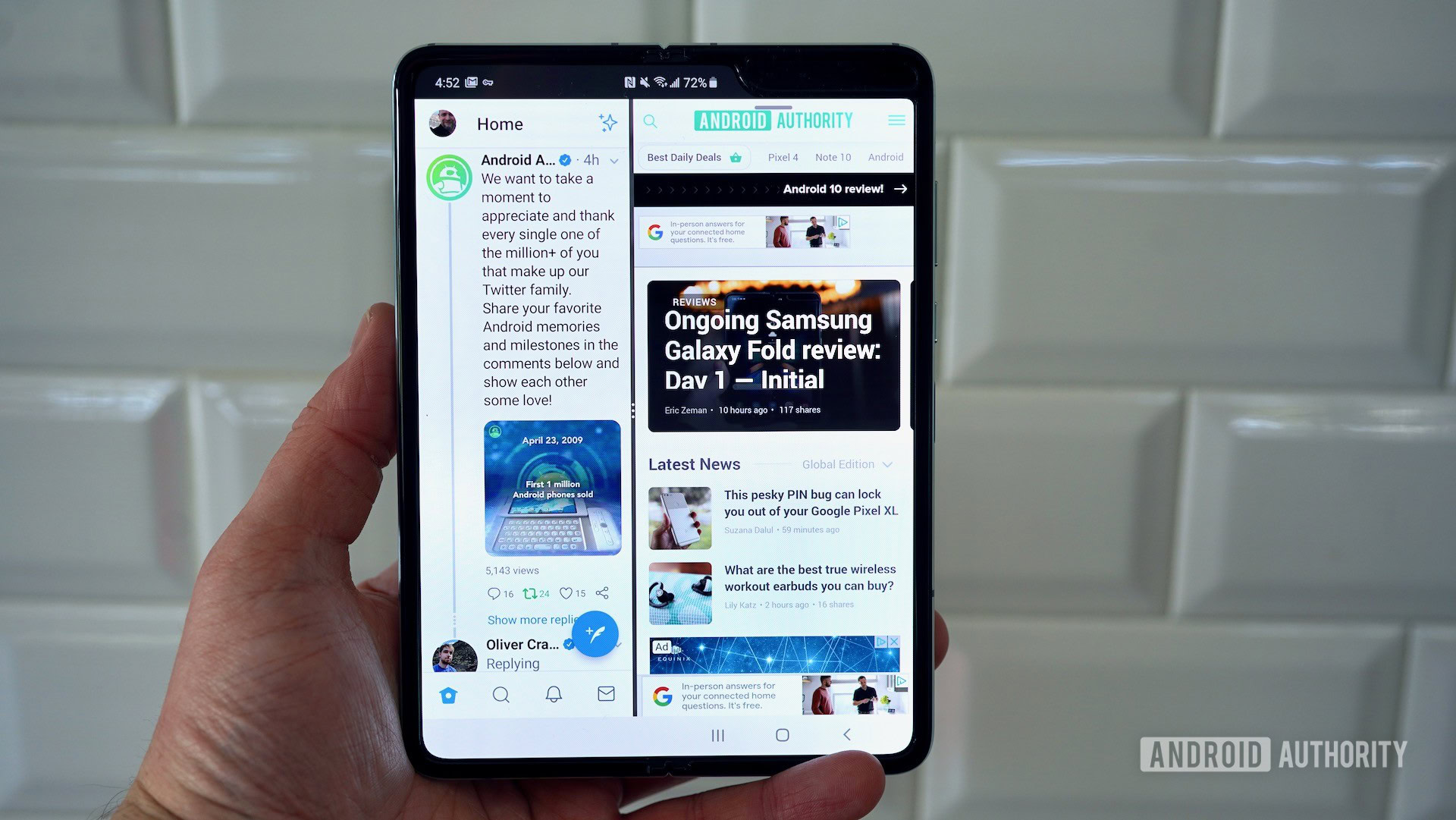
As functional as the Cover Display is, that’s not the reason you’re going to buy the Samsung Galaxy Fold.
Samsung calls the main screen Dynamic AMOLED Infinity Flex and has assigned a lot of fancy descriptors to it. It says the display is made from “tissue-thin bonded layers with innovative polymer, a new foldable adhesive, to a first-of-its-kind virtual dual-axis hinge.”
What’s the point of this screen? Real estate, of course.
In other words, it bends and is delicate. How delicate? Well, Samsung offers a range of warnings on what not to do to the pricey screen. For example, no S Pen or other styli, no fingernails, either. Don’t put a screen protector on it, and don’t pick at the edges. Woe unto thee who shalt break these rules.
What’s the point of this screen? Real estate, of course. Samsung claims the Galaxy Fold offers a 1.4x increase in size of the browser window when compared to the Galaxy Note 10 Plus. It also boosts the width of 16:9 videos by 1.3x, and, when in portrait mode, videos are 2.2x larger than on the Note 10 Plus. One cannot complain about more screen. It is indeed more tablet-like.
The larger display affords users to spend a lot more time with the Galaxy Fold, or at least to spend more time with their favorite apps. After several days’ use, I began to feel the Fold a familiar contraption. Sorting between messaging, calendaring, and other tasks felt natural enough that I didn’t need to think extra about them.
Don’t miss: Inside Google’s massive Android rebrand
Multitasking is fairly easy to put into place on the Fold. There’s a handy tray that slides out from the right edge so you can drag apps out onto the larger screen. I dig that the phone supports up to three apps on the display at once. I was able to run Twitter, Gmail, and Slack with no problem. Let me tell you how helpful that can be. Sizing the windows is a bit touchy, but it’s not hard to figure out.
Otherwise, it’s a basic Android experience — just more of it. Some apps really shine on the larger display, such as Gmail, Twitter, and Instagram. Everything on the Android 9-based One UI functions as it does on Samsung’s Note and S series devices.
I believe the basic usability concept of the convertible phone/tablet could use some rudimentary work, but the basics are in place.
See also: Samsung Galaxy Tab S6 review
Audio
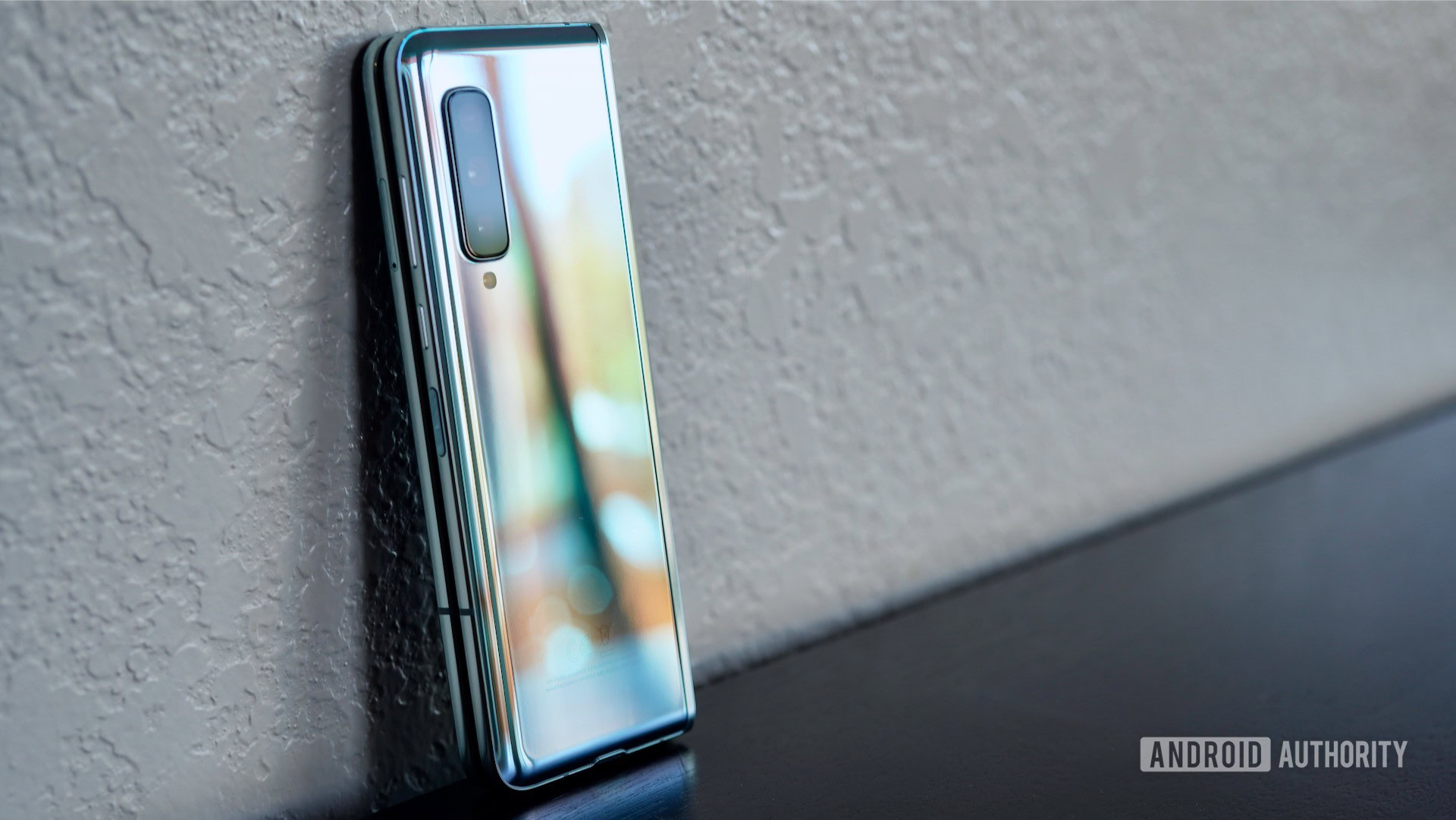
- Stereo speakers
- Bluetooth 5 with aptX HD
- Dolby Atmos
- No 3.5mm headphone jack
Stereo speakers are affixed along the top and bottom edges of the phone. Music pushed through the Samsung Galaxy Fold’s stereo speakers will provide a richer experience. There is no headphone jack on the Galaxy Fold, which means analog folk are left to their own.
The phone includes the same Dolby Atmos suite that’s available to the Note 10 series, which means you have plenty of opportunity to tweak the sound to your liking.
All said, however, the sound is surprisingly good. Not only is it loud, it is clear and free of distortion. That’s exactly what I want to hear when I’m in the mood for some Megadeth.
On the wireless side, the phone ships with Samsung’s capable Galaxy Buds. These are a great concession and sound very good.
Also read: Samsung Galaxy Buds review
Specs
| Samsung Galaxy Fold | |
|---|---|
Cover Display | 4.6-inch HD+ Super AMOLED 21:9 aspect ratio |
Main Display | 7.3-inch QXGA+ Dynamic AMOLED 4.2:3 aspect ratio |
Processor | 7nm 64-bit octa-core SoC |
RAM | 12GB (LPDDR4x) |
Storage | 512GB (UFS3.0) |
Cameras | Cover camera: 10MP selfie camera, ƒ2.2 aperture Rear triple cameras: 16MP ultra-wide camera, ƒ2.2 aperture 12MP wide-angle camera, Dual Pixel autofocus, OIS, ƒ1.5/ƒ2.4 apertures 12MP telephoto camera, PDAF, OIS, ƒ2.4, 2X optical zoom Front dual cameras: 10MP selfie camera, ƒ2.2 aperture 8MP RGB depth camera, ƒ1.9 aperture |
Battery | 4,380mAh Fast charging compatible on wired and wireless Wired charging compatible with QC2.0 and AFC WPC and PMA wireless charging |
Software | Android 9 Pie |
Network | 4G LTE 5G NR |
Connectivity | Bluetooth 5.0 Wi-Fi 6 GPS |
Value for the money
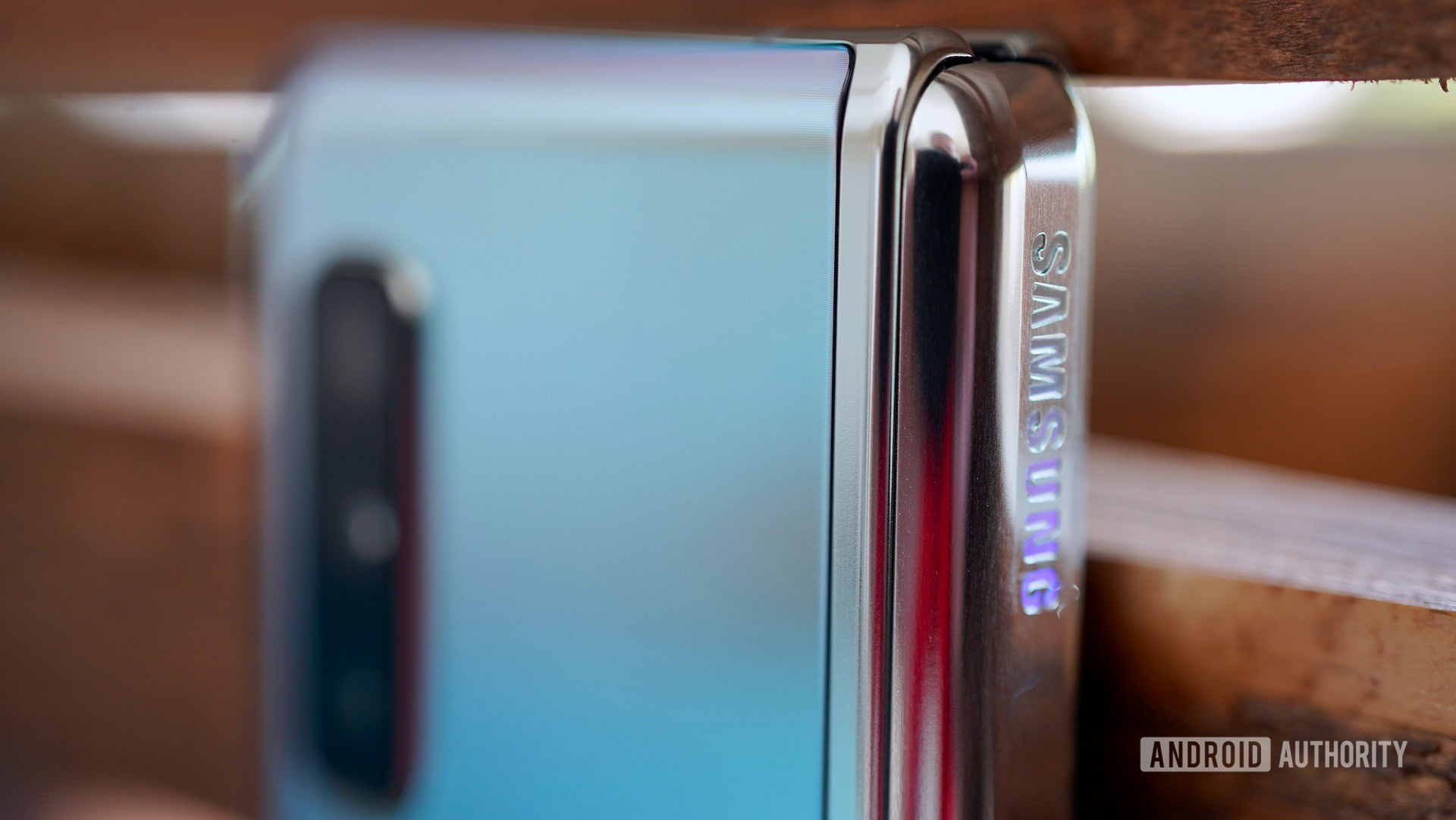
- Samsung Galaxy Fold: 12GB RAM, 512GB storage — $1,980
The Samsung Galaxy Fold is one of the more expensive phones to reach the market. At nearly $2,000, it’s not meant for regular people. This means the entire discussion over value is about something else altogether.
There’s nothing real in the Fold that you can’t get elsewhere. True, no other phone folds in such a way, offering both a small and a large screen for people to put to different uses. But at the end of the day, phones are meant as conduits to our friends, family, colleagues, and content. The Fold offers that, but so do most phones, even those that cost under $100.
The Galaxy Fold is a showpiece, an extravagance. No one needs the Samsung Galaxy Fold to manage their daily lives. But people will surely want the Fold — not because it represents a new mobile computing paradigm, at least not at first, but because bleeding edge early adopters need something new to show off. There has not been a legitimately new form factor in the mobile space for some time. This is what the Fold represents.
Whether or not you value the attention, the unique experience offered by the Fold, is up to you.
Since we first published this review, several competitors have reached the market. The LG G8X ThinQ, which doesn’t technically fold, but includes an optional secondary display, costs significantly less than the Fold and gives you nearly all the functionality. The G8x ThinQ is something you should consider even if you’re not in the market for a folding phone. Then there’s the HUAWEI Mate X. It’s even more costly than the Fold at $2,700. Moreover, it’s only available in China. If you’re in China and have the cash, it might be worth a look. Last, if you don’t mind waiting until next year, Motorola and Verizon will soon have the revived RAZR, which is less premium than the Fold, but also a lot less expensive. For now, if you’re dead set on owning a folding smartphone, the Galaxy Fold is it.
See also: Here’s why Galaxy Fold design is better than Mate X
Samsung Galaxy Fold review: The verdict
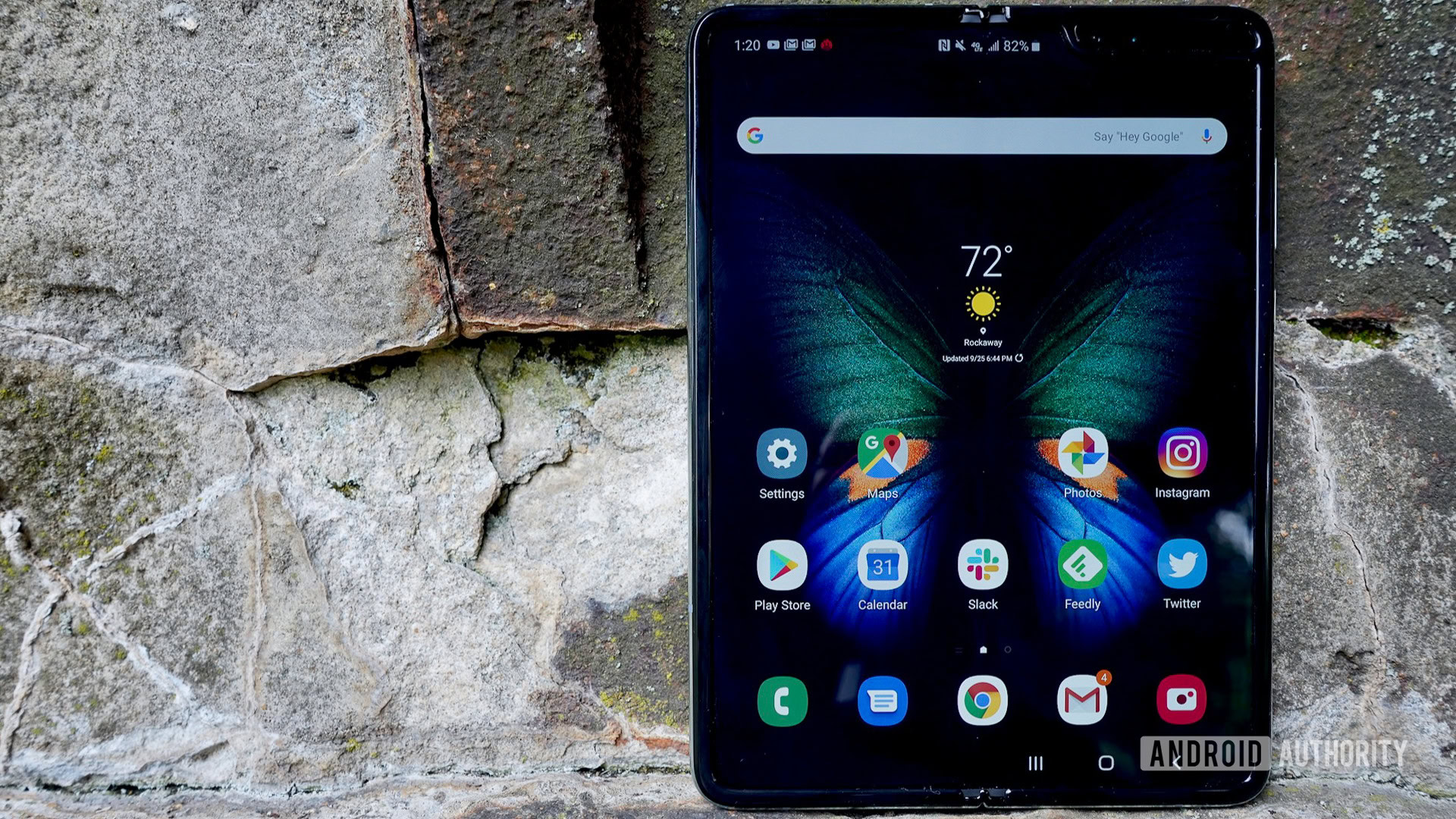
Wow. It’s been a long, long road for Samsung to reach this point. The company first waved around the Fold’s profile at its developer conference way back in November 2018. It later gave the Fold a more public launch in February. Samsung originally intended to get the phone to market by June, but faulty screens led Samsung to delay the phone’s debut until it could make changes to the hinge and screen. Here we are, mere days from October, and the phone is finally ready for consumers.
The Fold covers all the smartphone basics and then some. It has good screens, good battery life, a good set of cameras. Samsung was sure to give the phone wireless charging, high-quality audio, as well as extras such as wireless earbuds and a simple case. The hardware is certainly unique, and the ability to use the phone open or closed makes it a more flexible option.
I like the Samsung Galaxy Fold and the inflection point at which it stands. Now that slim slabs are a dime a dozen, the industry needs something new on which to fixate. Folding phones appear to be what’s on deck. While the Fold isn’t perfect for me — or most people — it’s a step toward the future. We’ll have to wait to see where its path ends.
Of course, there’s that one niggle. One Samsung Galaxy Fold review unit has already failed. Will others? Did Samsung really fix the phone, or is it a money pit waiting to happen? If you’re at all trepidatious about spending so much coin on such a fragile device, perhaps it would be best to take the wait-and-see approach.
Samsung began selling the Galaxy Fold on September 27. It’s available from AT&T and Amazon as well as select AT&T and Best Buy retail stores.
Update July 17: Waiting on news of the Samsung Galaxy Fold 2, which may not arrive for several months. The price of the original Galaxy Fold has come down only $200, but it is still available from Amazon.
Update May 8: We’ve now had a chance to review the LG V60 ThinQ 5G. While the phone itself is a big improvement over devices such as the LG G8x, the Dual Screen is identical in its capabilities and limitations. In other words, you’re going to get a more seamless experience on the Galaxy Fold — at twice the price.
Update March 20: LG has now released the LG V60 ThinQ 5G with an attachable second display. It’s an incredibly good value at $999 for the phone and screen together, and is more flexible due to the nature of the removable second screen. We generally liked the smaller LG G8x, which also had a second display, and we expect the V60 ThinQ 5G to be similarly appealing.
Update February 17: Samsung has now released the Galaxy Z Flip, a high-end, clamshell flip phone. The device offers a totally different experience than the Fold — one that we think might be better for people overall. The Z Flip costs $600 less than the Fold, is more pocketable, and is certainly more user friendly.
This concludes our Samsung Galaxy Fold review. What do you think? Do you plan to drop some serious cash on this phone? Let us know!
Samsung Galaxy Fold in the news
- LG V60 ThinQ Dual Screen review
- Galaxy Fold 2 camera specs revealed
- Galaxy Fold 2 tipped to have under-display selfie cam
- Samsung sold close to half a million Folds
- Galaxy Fold 2 rumored to use older Snapdragon chip
- Galaxy Fold 2 could reach stores before S11
- Foldable phones are prone to scratches
- Samsung Galaxy Fold breaks after robot tests
- Samsung Galaxy Fold teardown reveals secrets
- Is the Samsung Galaxy Fold a good tablet?
- Samsung Galaxy Fold gains Note 10 camera features